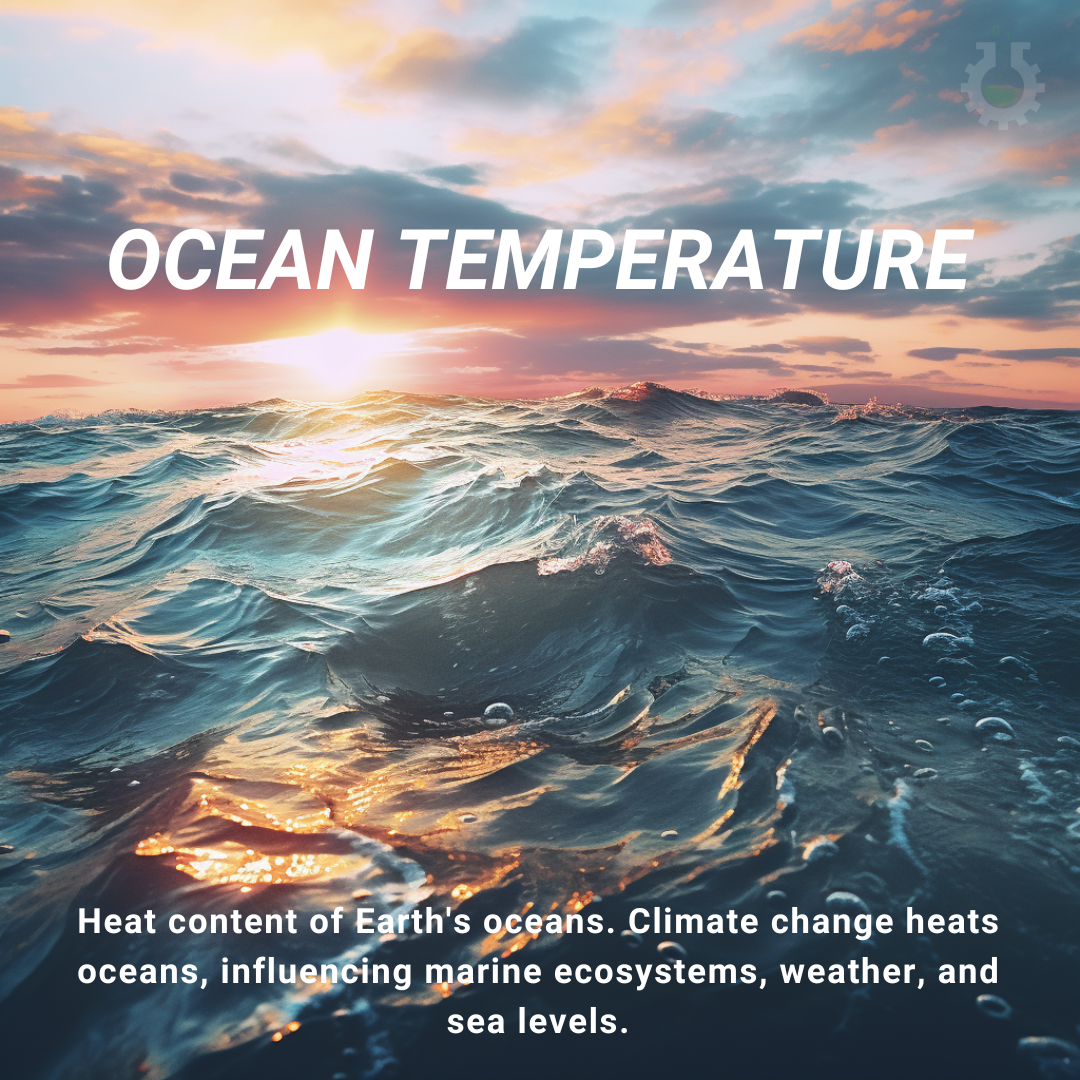August 31, 2023
Climate Change Poster Collection of the Day – Ocean Temperature
Book a Demo
Today’s Climate Change Poster Collection features the temperature of ocean water, a complex variable that fluctuates significantly based on depth and location. Surface temperatures of the ocean can range anywhere between -2°C to 30°C. This vast range is influenced by multiple factors including geographical location, depth, season, and weather patterns.
Recent studies have indicated that global warming has led to a rise in ocean surface temperatures. Over the past century, an increase of 0.1°C per decade has been observed. This gradual temperature increase has far-reaching impacts on marine ecosystems and weather patterns around the world.
One significant factor influencing ocean temperatures is the El Niño Southern Oscillation. This natural phenomenon causes ocean temperatures to fluctuate over a few-year periods. This oscillation can lead to drastic changes in weather patterns, affecting human activities and wildlife alike.
Another key element in regulating ocean temperatures is the Thermohaline Circulation, often referred to as the ocean’s conveyor belt. This global system plays a crucial role in the distribution of heat around the Earth. It moves warm water from the equator towards the poles, and cold water from the poles back towards the equator, helping to balance the Earth’s temperature.
Ocean temperature gradients can significantly affect weather patterns, climate, marine life, and ecosystems. For instance, a sudden change in ocean temperature can disrupt the breeding patterns of certain marine species, affecting the overall health of the ecosystem.
Furthermore, seawater temperature varies with latitude. It is generally warmer at the equator due to direct sunlight, and colder at the poles due to the sun’s angled rays. This affects not only marine life but also influences the climate of surrounding regions.
The surface temperature of seawater also changes with the seasons, peaking in late summer and reaching its lowest point in late winter. This seasonal swing can have dramatic effects on local weather patterns and can influence the migration of many marine species.
Lastly, the thermocline, or the temperature gradient in the ocean, usually lies between 200 and 1,000 meters below the surface. In this area, temperature rapidly decreases with depth. This drastic change in temperature with depth is another factor that significantly influences ocean currents, marine life, and global climate systems.
Understanding the factors that influence ocean temperatures is essential for predicting weather patterns, protecting marine life, and combating climate change. Ongoing research in this area will continue to shed light on the complex dynamics of our oceans and their integral role in Earth’s climate system.
Discover an inspiring collection of climate change posters.



